

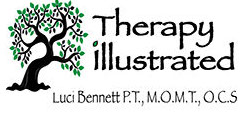
Disc Herniation
A herniated disc is when the annular walls of the spinal disc are damaged resulting in swelling and inflammation. The damaged annular wall is unable to contain the jelly nucleus and protrudes into the canal possibly compressing the spinal cord or the nerves. There are different types and degrees of disk damage.
The disc is a thick spongy spacer between the bodies of the vertebrae. It has two major sections. The outer wall is called the annulus fibrosa and consists of a thick dense gristly tissue that attaches to the body of the vertebrae all the way around its periphery. This annular wall contains and supports a watery gel known as the nucleus pulposa.
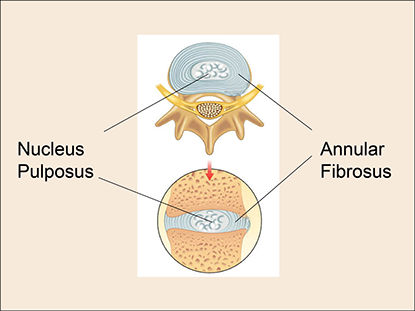
The disc’s primary function is to allow for motion to occur between the spinal bones as well as offer shock absorption. Bending forward compresses the front wall of the disc and stretches the back wall taunt. Bending backwards causes the opposite result.
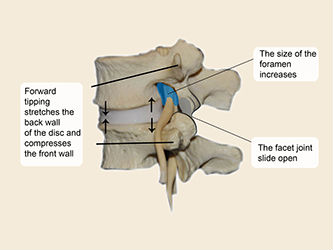
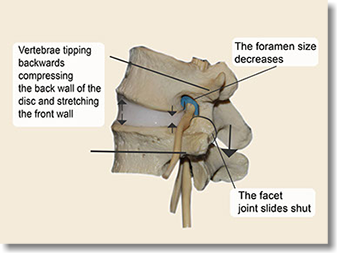
The majority of life’s tasks involve bending forward, stooping, lifting, and sitting all of which generate cumulative stress of the back wall of the disk. When a twisting or tipping motion is added to bending then the strain on the walls exponentially increases and can result in a tear. The degradation of the wall reduces its ability to retain the nucleus and then it pooches out. How much the wall breaks down and how far things pooch out all factor into the degree of disc herniation. The direction of the herniation will define the pain pattern and movement/strength dysfunction. There is not a lot of space in the vertebrae, and a herniation can press on the nerve or the cord.
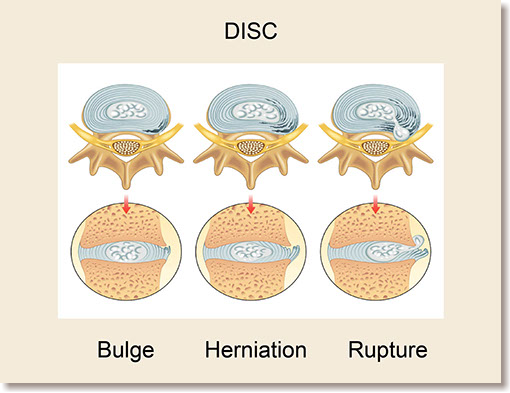
A disc bulge is a minor to moderate disruption in the annular wall resulting in a bulging that may or may not have an inflammatory component.
Disc herniation can range from a moderate to severe disruption of the annular wall which is usually swollen and inflamed possibly resulting in some irritation or compression on the cord or the nerve depending on what part of the annulus has broken.
Disc rupture is a complete tear in the wall that sometimes may have a fragment floating in the general vicinity.
No. The spinal cord is directly behind the disc, and the nerves are to the side. Many disc herniations occur in a posterior direction but stay central. The herniation can be big enough to cause pain in the back but not actually press on the spinal cord.
Does a disc herniation always pinch a nerve?
The contents of BackPainExplained web site including the text, graphics, images, and other material are for informational purposes only. The content of this web site is not intended to be a substitute for professional medical advice, diagnosis, or treatment. Always seek advice of your physician or other qualified health professional with questions you may have regarding a medical condition. Do not delay seeking medical advice or disregard professional treatment advice because of something that you have read on BackPainExplained.
Call your physician or 911 if you think that you have a medical emergency. Reliance on any information within BackPainExplained web site is solely at your own risk.